The IBM POWER8 Review: Challenging the Intel Xeon
by Johan De Gelas on November 6, 2015 8:00 AM EST- Posted in
- IT Computing
- CPUs
- Enterprise
- Enterprise CPUs
- IBM
- POWER
- POWER8
Taking a Closer Look At IBM's S822L
The S822L was mounted in the Xeon server dominated racks inside our experimental datacenter. The build quality of both the rails and server were apparent, a "locking mechanism" made sure the server was easy to mount without a screwdriver and was kept firmly at its place.
The system booted by using the Flexible Service Processor (FSP), which is comparable to the Baseboard Management Controllers as they are both components that allow you to manage and monitor your server thanks to the IPMI specification. The main difference with Xeon system is that the FSP and its related firmware and software is the only way you can control your system. There is no "BIOS" screen or BIOS configuration setup, everything has to be configured and booted via the FSP software. You could say that the "BIOS" and "BMC management software" are now integrated into one central firmware.
To power on the S822L, you have to access the FSP using the open-source IPMItool. Once the server is booted up, the "petitboot" bootloader of OPAL (the OpenPOWER Abstraction Layer firmware) takes over. It scans all bootable instances (disks, network, optical, etc.) for operating systems, and is similar to the GRUB bootloader. From there, you can install Linux like you would on an x86 system.
The cover was covered with a lot of interesting service information about the upgrading and replacing the hardware.
Once we removed the cover, lots of expansion slots became visible.
No less than nine hot plug (!) low profile PCIe Gen 3 slots are available. Four of them are x16, ready for some GPU action. Five are x8. Only one of the PCIe slots is used for the standard quad-gigabit Ethernet adapter. We also had one Emulex FC card installed.
Also installed were two PowerPC based SAS RAID controller(s), capable of RAID-6 and all common RAID levels, which connectto a dual backplane that offers 12 Small Factor Form (2.5 inch) drives. These drives can be SAS SSD or hard disks, which is a reliable but rather expensive storage choice. A DVD drive was also present, which allowed us to install Linux the old-fashioned way.
At the back we find two hot-swappable PSUs, four gigabit Ethernet interfaces, two USB 2.0 ports, an HMC dual-gigabit interface (an HMC is a hardware applicance that can manage several IBM servers) and one system port.
The server is powered by two redundant high quality Emerson 1400W PSUs.


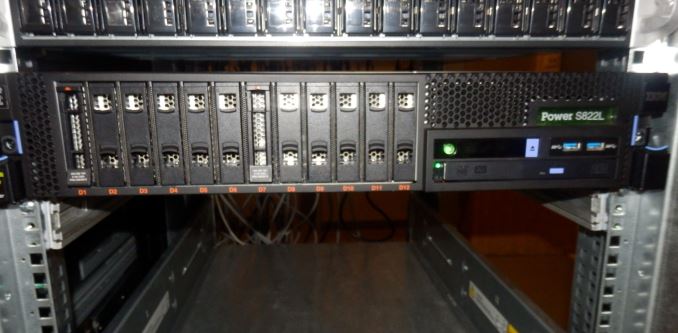
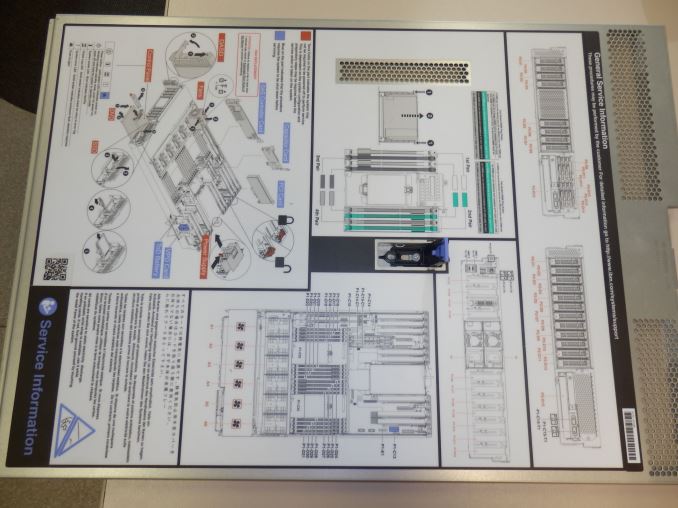
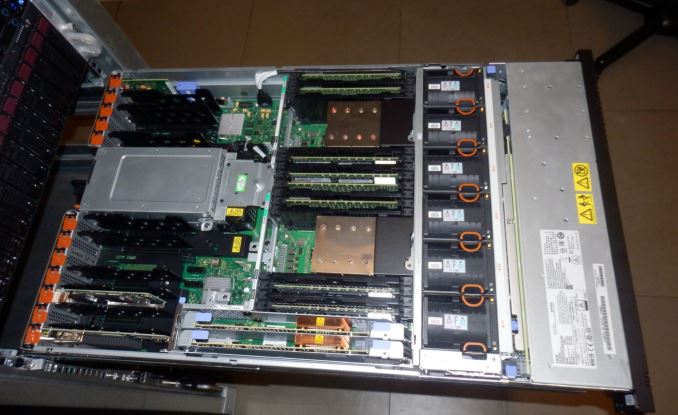
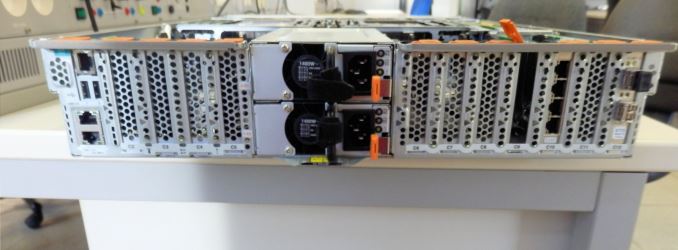
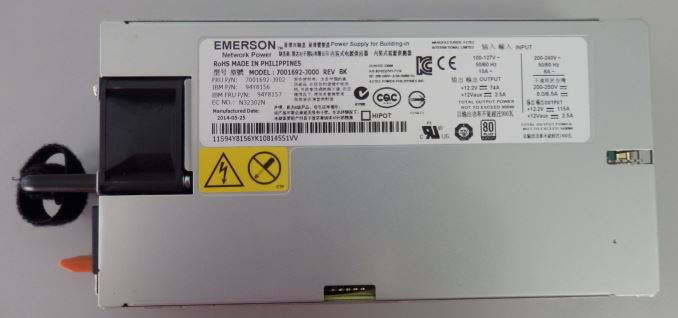








146 Comments
View All Comments
extide - Friday, November 6, 2015 - link
No he meant that in a lot of the european countries they use the dot as a comma, so it would be 50.000 to mean 50 thousand.Murloc - Sunday, November 8, 2015 - link
the international system dictates that , and . are the same thing, and as a separator you should use a space.In many countries in Europe, ' is also used. That's fine too as there is no ambiguity.
Using . and , for anything that is not the decimal separator in international websites just creates confusion imho.
I guess AT doesn't have a style book though.
duploxxx - Friday, November 6, 2015 - link
nice review.but Xeon is not 95% of the market. AMD is still just a bit above 5% on its own. so it deserves a bit salt :) not to mention the fact that competition is good for all of us. if reviewers continue like this all narrowed readers will think there is no competition.
silverblue - Friday, November 6, 2015 - link
I'm left wondering what a Steamroller-based 16+ core CPU would do here, considering multithreading is better than with previous models. Yes, the Xeons have a large single-threading lead, but more cores = good in the server world, not to mention that such a CPU would severely undercut the price of the competition.Shame it isn't ever going to happen!
lmcd - Friday, November 6, 2015 - link
Or even an Excavator! It's a shame AMD didn't just keep Bulldozer developing internally until at least Piledriver, and iterate on Thuban.Kevin G - Saturday, November 7, 2015 - link
AMD killed off both Streamroller and Excavator chips early on as the Bulldozer and Piledriver chips weren't as competitive. More importantly, OEMs simply were not interested even if those parts were upgrades based upon existing designs. Thus the great AMD server drought began as they effectively have left that market and are hoping for a return with Zen.Also I should point out that Seattle, AMD's first ARM based Opteron has yet to arrive. This was supposed to be out a year ago and keep AMD's server business going throughout 2015 during the wait for Zen and K12 in 2016. Well K12 has already been delayed into 2017 and Seattle is no where to be found in commercial systems (there are a handle of Seattle developer boards).
JoeMonco - Saturday, November 7, 2015 - link
When you account for only 5% of the market while the other side commands 95%, you aren't really much of a credible competitor.xype - Sunday, November 8, 2015 - link
That’s not always correct, though. You can have 5% of the market and 20% of the profits, for example, which would put you in a way better position than your competitors (because only a small increase in market share would pay big time).Murloc - Sunday, November 8, 2015 - link
that applies more to consumer products, e.g. apple.dgingeri - Friday, November 6, 2015 - link
I've been dealing with IBM Power based machines for 5 years now. Such experience has only given me a major disdain for AIX.I do NOT advise it for anyone. It sucks to work on. There is a certain consistent, spartan logic to it, but it is difficult to learn, and learning materials are EXTREMELY expensive. I never liked the idea of paying $12,000 for a one week class that taught me barely a tenth of what I needed to know to run an AIX network. (My company paid for the class, but I could not get them to pay for the rest of them, for some reason.) This makes people who can support AIX extremely expensive to employ. Figure on paying twice the rate of a Windows admin in order to employ an AIX admin. Then there is the massive expense of maintenance agreements. Even the software only maintenance agreement, just to get patches for AIX, is $4000 per year per system. They may be competitive in cost up front, but they drain money like vampires to maintain.
Even the most modern IBM Power based machine takes 20-30 minutes to reboot or power up due to POST diagnostics. That alone is annoying enough to make me avoid AIX as much as I can.